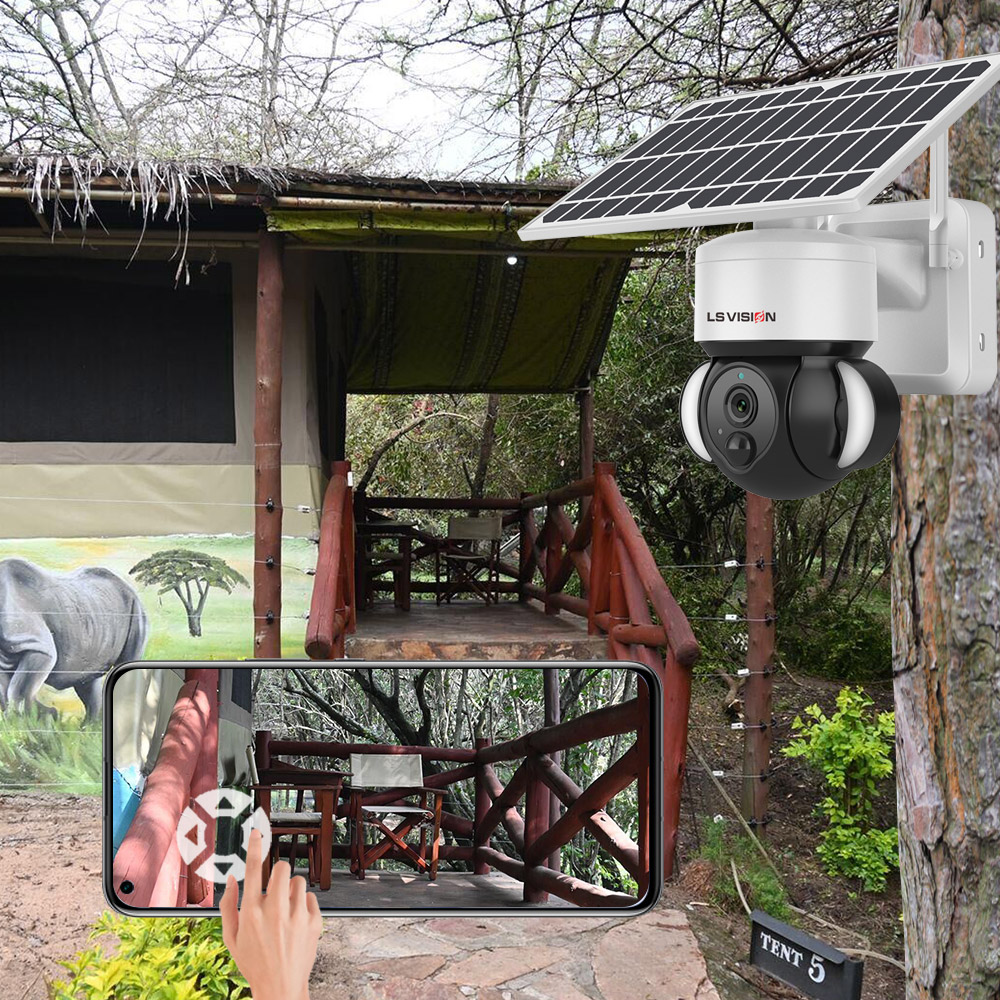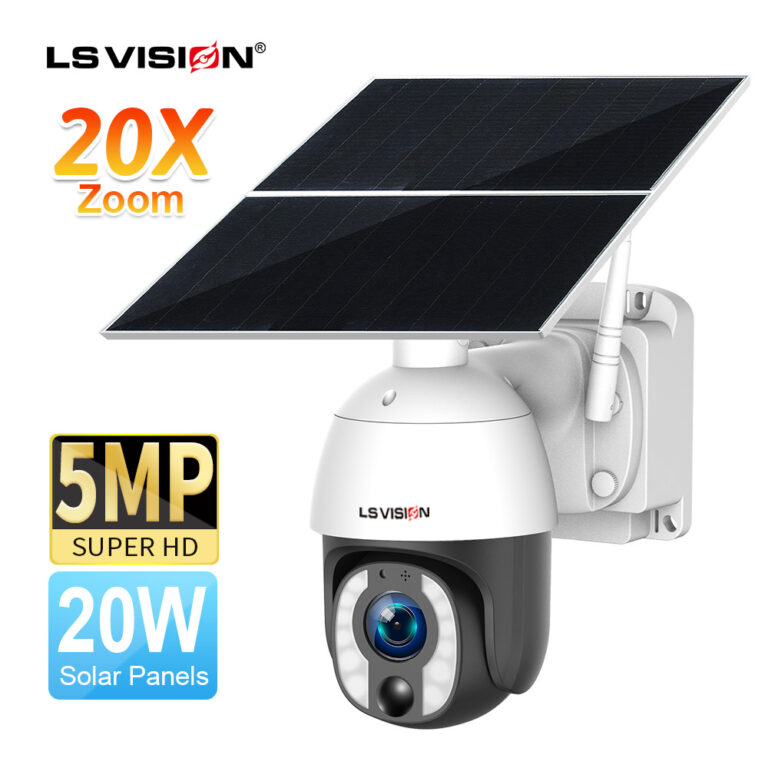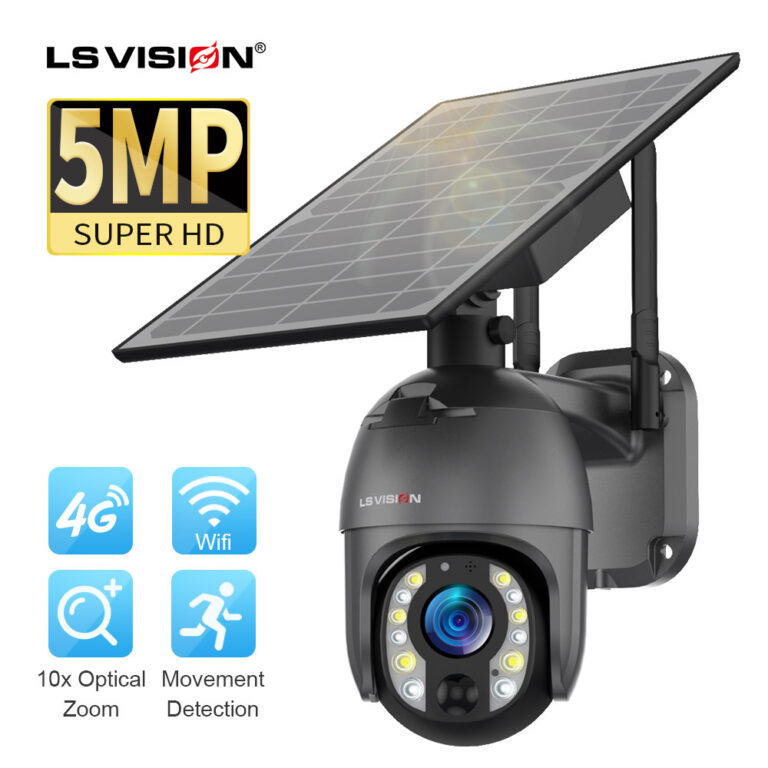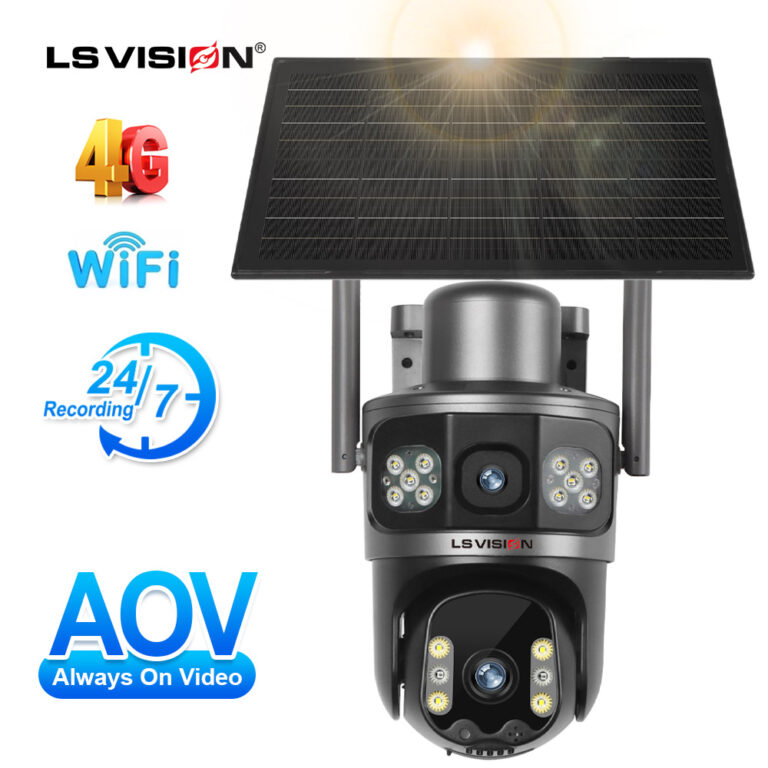In order to protect public safety and personal financial security, more and more individuals and units choose to install video surveillance cameras in the wild to play the role of real-time monitoring and retrospective afterward. However, when installing cameras in the wild, you need to consider the power supply and connection of the equipment… The various conditions are very annoying.
Surveillance camera solar For Field is mainly used in various breeding base monitoring, planting greenhouse monitoring, forest fire video monitoring, remote monitoring of mines, etc. These projects are unattended in the wild and other environments. The advantage of this camera is that it can be installed directly without connecting to a power source and can be powered by solar energy to maintain the camera’s work. In addition, this kind of camera generally has a built-in battery, which can be used on rainy days when there is no sun.
In the field, two prerequisites can be drawn. One is that there is no source of electricity and solar power is required; the other is that there is no broadband, and you need to consider using a data card or network card to achieve remote monitoring. There is no wired network or wifi, and you need to use a 3G/4G network to transmit signals. These two issues are discussed separately.
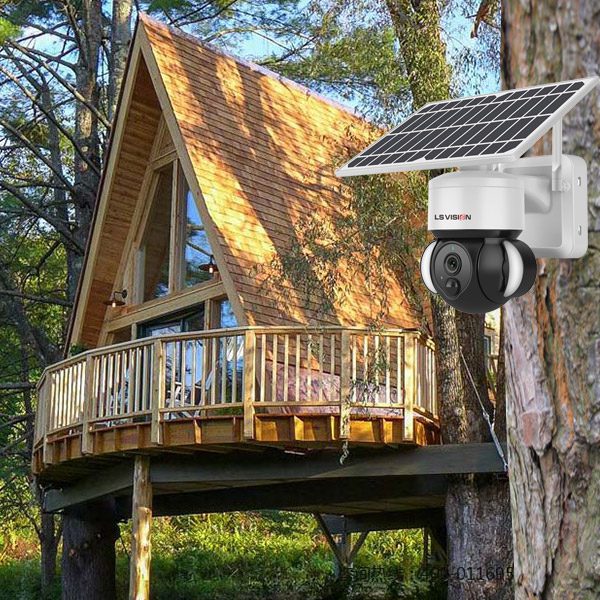
⑴ Regarding solar power supply, it is actually independent of the camera. In principle, you can choose a plan separately. This one mainly involves four parts:
▶Solar panel
▶Energy storage battery
▶Charge management
▶Installed fittings
The power of the solar panels can be matched according to the local sunshine conditions to maximize the battery life of the surveillance cameras. There are currently many overall solutions available on the market. You only need to tell the seller the power consumption of your cameras.
⑵ Regarding data transmission, if there is no wired network or wifi, you can only choose a 3G/4G network to transmit video or local storage. According to common situations, local storage is generally not chosen because it is more troublesome to maintain. When choosing 3G/4G network transmission, it is necessary to consider saving traffic, so it is best to choose a camera with a motion detection function (recording and uploading when the screen changes, and not recording the rest of the time). If you need to shoot at night, you also need to have a supplementary light function. .
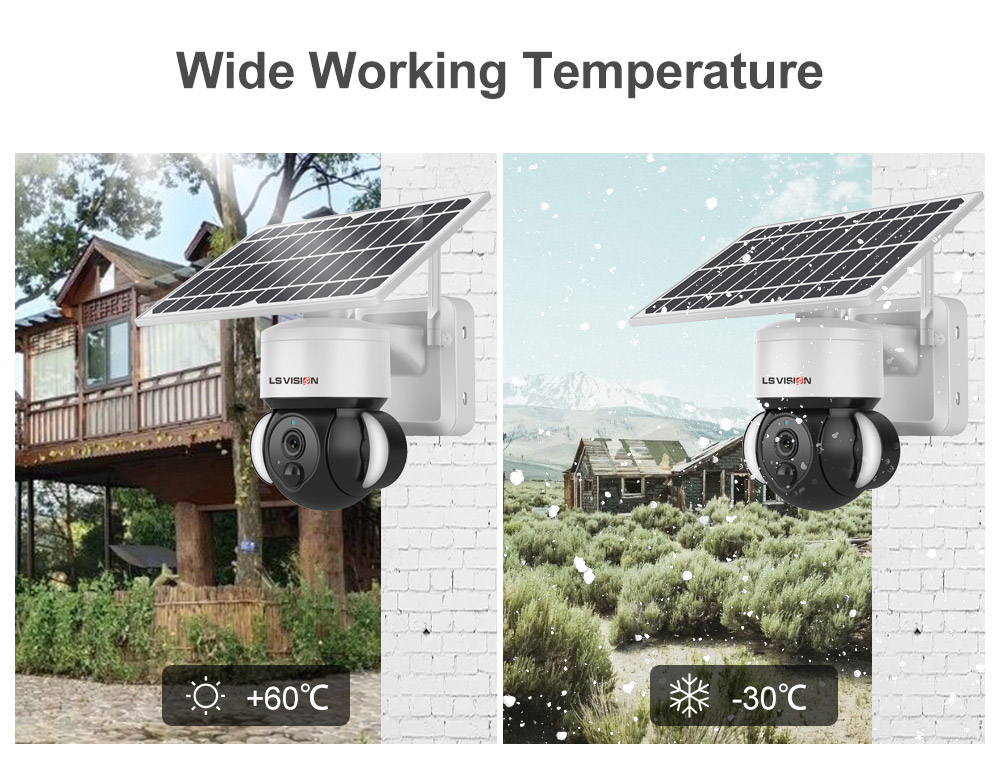
With the continuous popularization of 4G networks, 4G network video surveillance equipment is more widely used. It adopts the latest 4G network technology and a variety of optional 4G hemispheric PTZ cameras. It has easy installation, no wiring troubles, wide-coverage, and high-definition images. , Real-time audio and video transmission speed and other advantages.
① The 4G surveillance camera is equipped with an automatic constant temperature module. When the temperature of the camera is below zero, it will automatically heat up. When the temperature is higher than a certain temperature, the 4G surveillance camera will cool down by itself, so that the normal operation of the 4G surveillance camera can be guaranteed.
②. The 4G surveillance camera is equipped with high-power infrared LED lights, and the 4G surveillance camera has a good fog penetration ability, so the 4G surveillance camera has a pretty good night vision effect.
③. The built-in advanced lightning protection module can protect the power supply and video signal of the 4G surveillance camera very well. It adopts a three-level series protection mode.
④. The 4G surveillance camera has a built-in 4G full Netcom module and a professional full-band 4G antenna, so the signal is very stable.
⑤. 4G surveillance cameras are not only installed indoors but also installed outdoors in many cases, so the camera housing adopts a double-layer shield design, which has the functions of sun protection and waterproofing.
⑥. Good infrared night vision effect, because the 4G surveillance camera uses a low-light sensor chip, the difference is that the surveillance image during the day is in color, while the surveillance image at night is black and white.
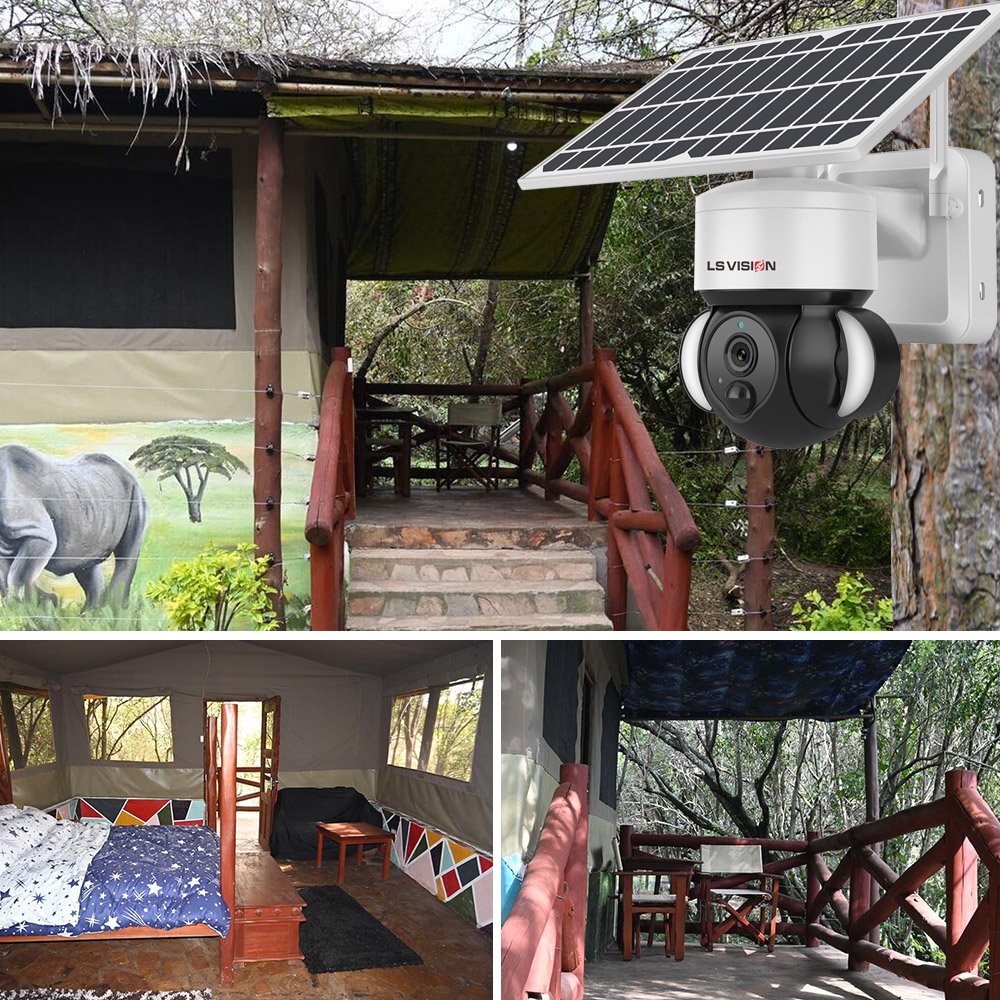
When choosing a solar IP camera for the field, you must also consider the high waterproof level to ensure the life of the surveillance camera. It is best to choose a surveillance camera with fast charging and large-capacity batteries to ensure long battery life. The surveillance camera must be clear and high magnified. Choose the magnification according to your own usage. Not only can you see clearly during the day, but also at night with infrared night vision. It is the best that can support the intercom function. We can’t get there for a while outdoors, and we can deter thieves by calling the police and speaking.
“Want to complete the field monitoring arrangement conveniently and quickly, how about it?”
• 4G camera that can be connected to the Internet with a card, a temporary choice
Applicable scenarios: temporary exhibitions, construction sites, temporary express delivery points, orchards, fish ponds, and other scenarios without broadband and wifi network coverage.
The use of 4G cameras can achieve temporary and rapid deployment, without the need to lay pipes and wires in advance, and the stand-alone machine is installed and used, which effectively guarantees the efficiency of construction. It is suitable for power supply conditions but difficult to build in a wired network environment, and equipment and labor costs are high in the environment. Scenes.
4G surveillance camera
Advantage:
①The 4G camera has a built-in 4G card slot, which supports data cards of major operators, so there is no need to bother to build a network
②It satisfies remote preview, supports card storage, and can record normally even if the network is disconnected
③It can be reused by wired connection in the later period to meet daily monitoring needs
•Easy to install the wireless camera, exquisite choice
Applicable scenarios: environments with wifi coverage around houses, etc.
Many houses now install cameras around the house or in front of the store for the convenience of housekeeping.
For such users with long-term monitoring needs, it is recommended to use wireless WIFI cameras to make good use of the “only one wall” indoor WIFI.
Use a wireless WIFI camera, no network cable, and wirelessly connect to the WIFI network in the house to achieve networking. Compared with 4G cameras, there is no need to consume 4G network fees, and the cost is lower.
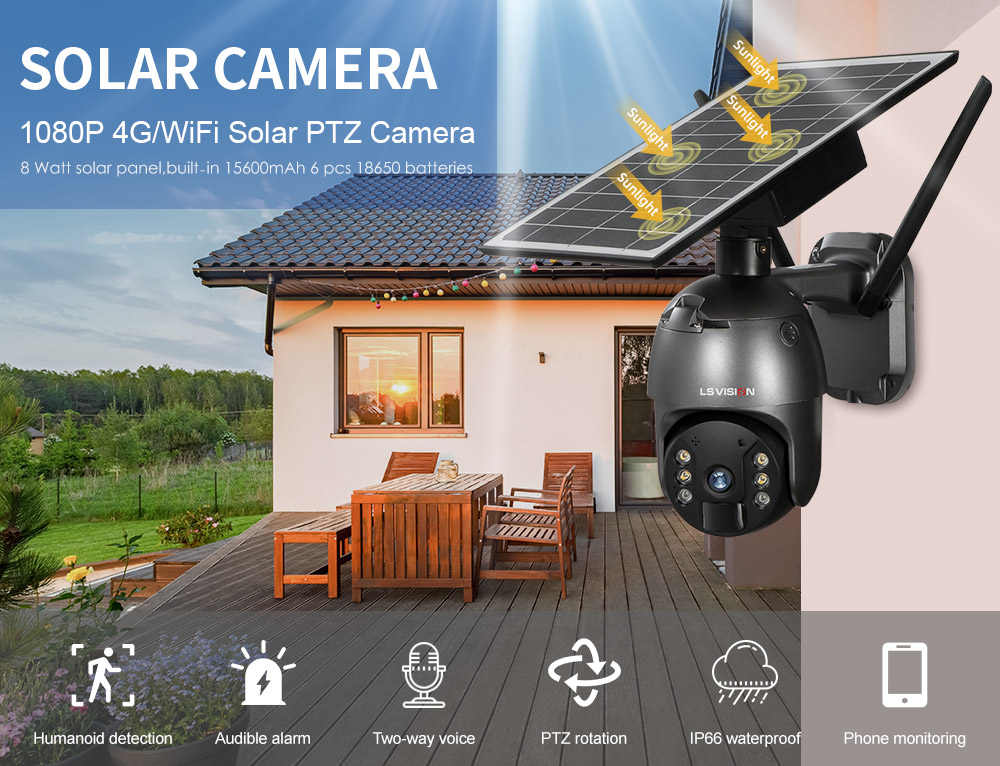
• Solar-powered +4G camera, stronger camera in the field
Applicable scenarios: Orchards, vegetable gardens, ponds, forests, scenic spots, etc., where there is no broadband network, wifi, and not connected to the mains power supply environment
If the scene that needs to be monitored is located in the wild, far away from the power supply facilities, and it is difficult to lay the network, then consider the solar camera 4g (4G camera + solar power supply accessories) in this environment to solve the “hard” field conditions.
In terms of power supply, solar panels can reach 20W, with a capacity of 30000mAH, and can last for 3 days when fully charged in rainy and cloudy days;
In terms of networking, 4G full Netcom cameras are used to achieve wireless networking in the field, and it also supports remote preview of app mobile phones.
In addition, solar-powered accessories can also be used to supply power for other devices. It consumes less power on cloudy days, charges quickly on sunny days, has a long life, is easy to install, is easy to maintain, is not afraid of cold, and is ultra-heavy.
In general:
A field camera with a 3G/4G communication function and motion detection function can be satisfied. In addition, when installing in the field, you also need to consider factors such as pole installation, waterproof and dustproof, wind and lightning protection.
